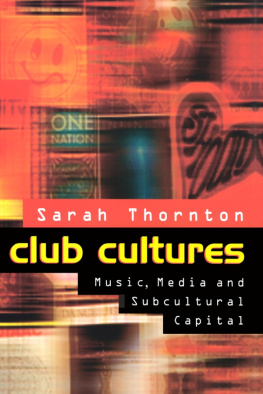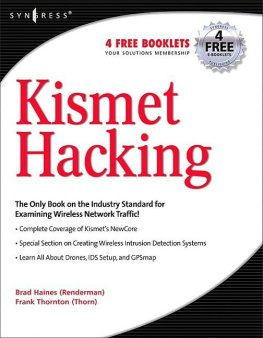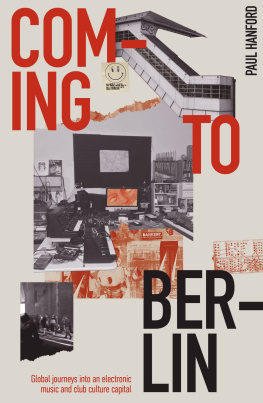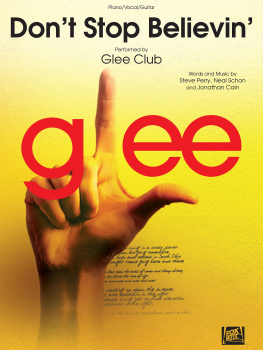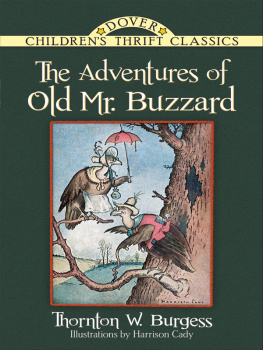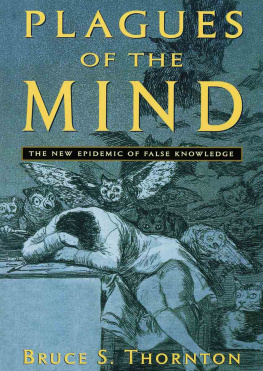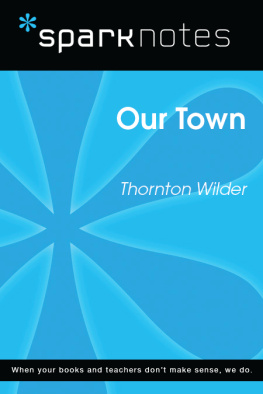Thornton - Club Cultures Music, Media and Subcultural Capital
Here you can read online Thornton - Club Cultures Music, Media and Subcultural Capital full text of the book (entire story) in english for free. Download pdf and epub, get meaning, cover and reviews about this ebook. City: New York;NY, year: 2013;2017, publisher: Polity Press;John Wiley & Sons, genre: Politics. Description of the work, (preface) as well as reviews are available. Best literature library LitArk.com created for fans of good reading and offers a wide selection of genres:
Romance novel
Science fiction
Adventure
Detective
Science
History
Home and family
Prose
Art
Politics
Computer
Non-fiction
Religion
Business
Children
Humor
Choose a favorite category and find really read worthwhile books. Enjoy immersion in the world of imagination, feel the emotions of the characters or learn something new for yourself, make an fascinating discovery.
Club Cultures Music, Media and Subcultural Capital: summary, description and annotation
We offer to read an annotation, description, summary or preface (depends on what the author of the book "Club Cultures Music, Media and Subcultural Capital" wrote himself). If you haven't found the necessary information about the book — write in the comments, we will try to find it.
Club Cultures Music, Media and Subcultural Capital — read online for free the complete book (whole text) full work
Below is the text of the book, divided by pages. System saving the place of the last page read, allows you to conveniently read the book "Club Cultures Music, Media and Subcultural Capital" online for free, without having to search again every time where you left off. Put a bookmark, and you can go to the page where you finished reading at any time.
Font size:
Interval:
Bookmark:

SARAH THORNTON
Copyright Sarah Thornton 1995
The right of Sarah Thornton to be identified as author of this
work has been asserted in accordance with the Copyright, Designs and Patents Act 1988.
First published in 1995 by Polity Press
in association with Blackwell Publishers Ltd.
Reprinted 1996, 1997, 2001
Transferred to digital print 2003
Editorial office:
Polity Press
65 Bridge Street
Cambridge CB2 1UR, UK
Marketing and production:
Blackwell Publishers Ltd
108 Cowley Road
Oxford OX4 1JF, UK
All rights reserved. Except for the quotation of short passages for the purposes of criticism and review, no part of this publication may be reproduced, stored in a retrieval system, or transmitted, in any form or by any means, electronic, mechanical, photocopying, recording or otherwise, without the prior permission of the publisher.
Except in the United States of America, this book is sold subject to the condition that it shall not, by way of trade or otherwise, be lent, re-sold, hired out, or otherwise circulated without the publishers prior consent in any form of binding or cover other than that in which it is published and without a similar condition including this condition being imposed on the subsequent purchaser.
ISBN: 978-0-7456-6880-2 (Multi-user ebook)
A CIP catalogue record for this book is available from the British Library.
For Jeremy
- 1 The Distinctions of Cultures Without Distinction
- Plates 1 and 2 Two mould-breaking raves held just ten miles apart on 267 August 1989. (1) Five thousand ravers at World Dance party just before sunrise (2) A few hours later eight hundred clubbers greet the dawn at Boys Own party near East Grinstead.
(Photographs: David Swindells)
- Plates 1 and 2 Two mould-breaking raves held just ten miles apart on 267 August 1989. (1) Five thousand ravers at World Dance party just before sunrise (2) A few hours later eight hundred clubbers greet the dawn at Boys Own party near East Grinstead.
- 2 Authenticities from Record Hops to Raves (and the History of Disc Culture)
- Plate 3 One of the first instances of records made specifically for the public dancefloor. In 1950 Danceland Records, allegedly payrolled by Mecca Ballrooms, advertised the sovereignty and savings that their releases afforded dancehall operators.
(Reproduced by kind permission of the Musicians Union)
- Plate 3 One of the first instances of records made specifically for the public dancefloor. In 1950 Danceland Records, allegedly payrolled by Mecca Ballrooms, advertised the sovereignty and savings that their releases afforded dancehall operators.
- 3 Exploring the Meaning of the Mainstream (or why Sharon and Tracy Dance around their Handbags)
- 4 The Media Development of Subcultures (or the Sensational Story of Acid House)
- Plate 6 A selection of flyers from 198889
(Photograph: David Swindells)
- Plate 6 A selection of flyers from 198889
(Photographs: David Swindells)
(Reproduced by kind permission of the Musicians Union)
(Reproduced by kind permission of DJ magazine)
(Reproduced by kind permission of the Sun)
(Photograph: David Swindells)
(Photograph: David Swindells)
(Source: Leisure Consultants)
Publishers note: Every effort has been made to trace all the copyright holders, but if any have been inadvertently overlooked, the publishers will be pleased to make the necessary arrangement at the first opportunity.
I would like to acknowledge the financial support of the Association of Commonwealth Universities and the British Council (for funding my postgraduate research at the John Logie Baird Centre, Strathclyde University, Glasgow) and of the Coca-Cola Foundation (for financing a research fellowship at the Center for Humanities, Wesleyan University, Connecticut).
I am very grateful to many people for their advice and support during the writing of this book and the PhD dissertation from which it derives. First, my thanks go to those interviewees, informants and guides who spent time with me, on and off the dancefloor, sharing their experience of, and insights into, British dance culture. Thanks also to Andy Linehan at the National Sound Archive for his help with research and to David Swindells at Time Out for kindly allowing me to reproduce his photographs. Second, I want to express my profound appreciation to the following friends, students and mentors for their constructive comments on various chapters and drafts of the book. In alphabetical order, they are: Jos Arroyo, Brian Austin, Jacob Bricca, Matt Callaghan, Stephi Donald, Alan Durant, Leslie Felperin, Wendy Fonarow, Andrew Goodwin, Reesa Greenberg, Larry Grossberg, Dave Hesmondhalgh, Kate Lacey, Rachel Malik, Martin Montgomery, Mica Nava, Keith Negus, Richard Ohmann, Patria Roman, Kitty Scott, Roger Silverstone, Paul Theberge and John Thompson. I would especially like to thank Angela McRobbie and my dissertation supervisor, Simon Frith, for their invaluable and enduring guidance.
Finally, this book would not have been written without the steadfast support of my parents, Glenda and Monte Thornton, and my ad hoc editor and partner, Jeremy Silver.
The Distinctions of Cultures Without Distinction
Nothing could better signify the complete disappearance of a culture of meaning and aesthetic sensibility, says postmodern cultural commentator Jean Baudrillard, than a spinning of strobe lights and gyroscopes streaking the space whose moving pedestal is created by the crowd (Baudrillard 1982: 5). Baudrillards dismissal of the discotheque as the lowest form of contemporary entertainment reiterates a well-established view. Dance cultures have long been seen to epitomize mass culture at its worst. Dance music has been considered to be standardized, mindless and banal, while dancers have been regarded as narcotized, conformist and easily manipulated. Even Theodor Adorno, an early theorist of mass culture, reserved some of his most damning prose for the rhythmic obedience of jitterbug dancers, arguing that the music immediately expressed their desire to obey and that its regular beat suggested coordinated battalions of mechanical collectivity Thus do the obedient inherit the earth (Adorno 1941/1990: 312).
For many years, discotheques and dance music have even been excluded from popular musics own canons. Rock criticism and much pop scholarship have tended to privilege listening over dance musics, visibly performing musicians over behind-the-scenes producers, the rhetorically live over the recorded and hence guitars over synthesizers and samplers. Until the mid-eighties, successive genres of dance music tended to be dismissed as irrelevant fads or evoked as symbols of all that was not radical or innovative in music. Although these ideas are no longer held by as many music critics as they once were, the old rock canon persists in many spheres. For example, the following entry on disco music from the 1989 edition of the Penguin Encyclopedia of Popular Music typifies the opinion of the old guard:
Dance fad of the 70s with profound and unfortunate influence on popular music it had a disastrous effect on music for two related reasons, the producers and the technology producers, who already had too much power, used drum machines, synthesizers and other gimmicks at the expense of musical values most disco hitmakers were virtually anonymous, and the anonymity has translated into the sameness of pop music in the 80s. (Clarke 1989: 344)
The purpose of this book is not to celebrate the creativity of dance culture (it seems to me that this needs no proving), nor to canonize dance music nor elevate the status of discotheques. In fact, except for some discussion of the taste war between disc-dancers and the Musicians Union in the first chapter, I dont investigate in depth the values of people outside dance culture. Instead, I am concerned with the attitudes and ideals of the youthful insiders whose social lives revolve around clubs and raves.
Next pageFont size:
Interval:
Bookmark:
Similar books «Club Cultures Music, Media and Subcultural Capital»
Look at similar books to Club Cultures Music, Media and Subcultural Capital. We have selected literature similar in name and meaning in the hope of providing readers with more options to find new, interesting, not yet read works.
Discussion, reviews of the book Club Cultures Music, Media and Subcultural Capital and just readers' own opinions. Leave your comments, write what you think about the work, its meaning or the main characters. Specify what exactly you liked and what you didn't like, and why you think so.

